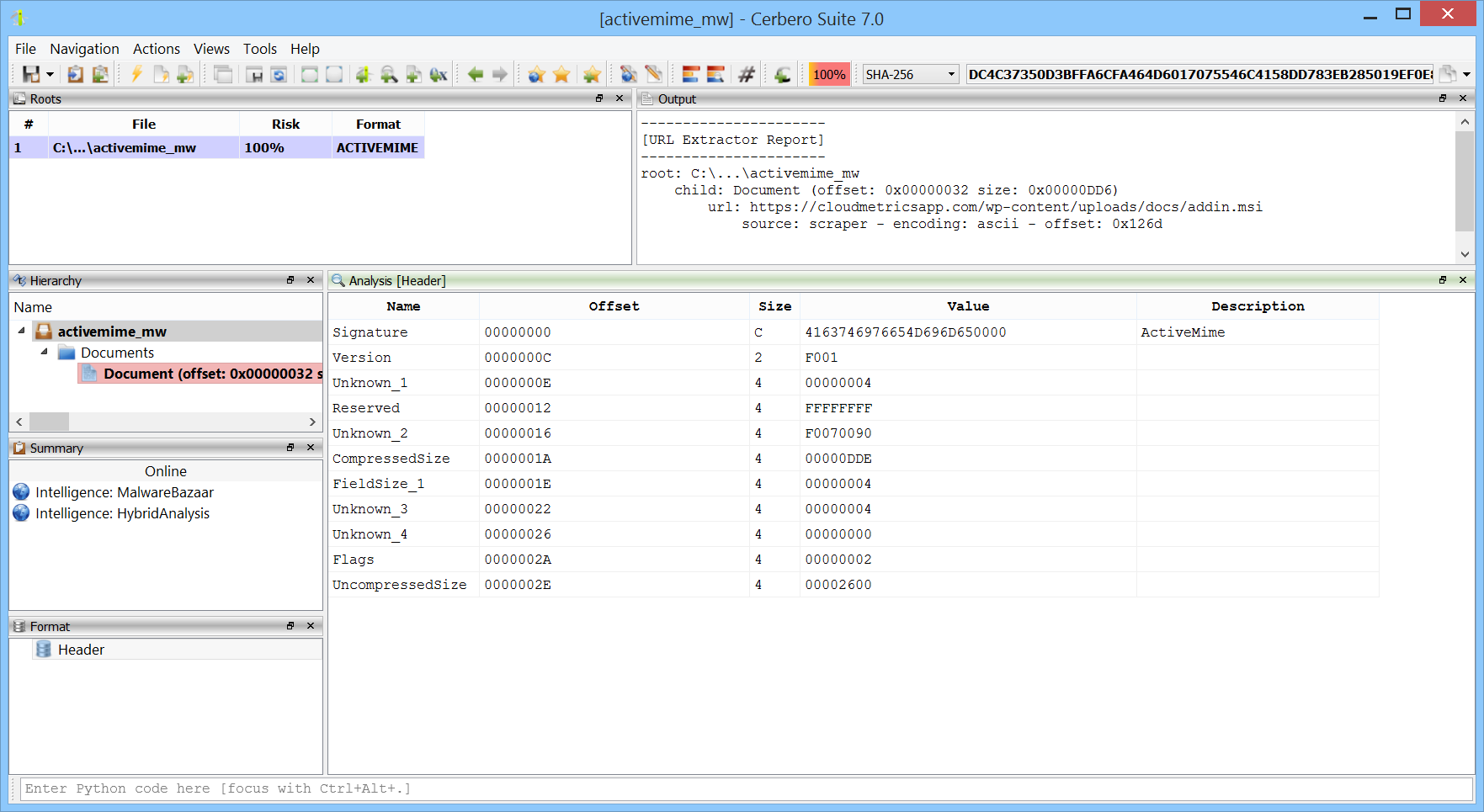We have added support for the Microsoft Office ActiveMime format. This format can be used to encapsulate Office documents and hide their contents during analysis. You can download the package from Cerbero Store.

We have added support for the Microsoft Office ActiveMime format. This format can be used to encapsulate Office documents and hide their contents during analysis. You can download the package from Cerbero Store.

MicroType Express is the (optional) compression technology used by Embedded OpenType fonts. It was specifically designed to compress TrueType fonts. These fonts are generally to be found in web pages or Office documents.

In this screenshot we have Internet Explorer displaying fonts download from remote. It is very easy to embed fonts in a web page.
@font-face {
font-family: Piefont;
font-style: normal;
font-weight: normal;
src: url(PIE0.eot);
}
@font-face {
font-family: GS;
font-style: normal;
font-weight: normal;
src: url(GOUDYST2.eot);
}
@font-face {
font-family: Garabold;
font-style: normal;
font-weight: 700;
src: url(GARAMON5.eot);
}
@font-face {
font-family: Garanorm;
font-style: normal;
font-weight: normal;
src: url(GARAMON4.eot);
}
@font-face {
font-family: Script;
font-style: normal;
font-weight: normal;
src: url(SCRIPTM2.eot);
}
What happens when Internet Explorer tries to open EOT fonts is that it loads T2Embed.dll from the System32 directory.

The job of this DLL is to convert EOT fonts back to the original OpenType format which is then parsed and displayed. Thus, EOT fonts are subject to exploits either in their MicroType Express layer or in the resulting OpenType font. In fact, lzcomp, the custom compression algorithm based on lz77 used by MicroType Express, has been exploited as a vector for remote code execution. It should be noted that the vulnerability has been reported in 2010 and the W3 submission by Microsoft of the MicroType Express standard is dated 2008. The lzcomp decompression code contained in the W3 submission does not include the patches introduced after the vulnerability was reported (I checked). So while probably few will use the code anyway, they should be careful to add safety checks in order to not include the above mentioned vulnerability in their own code.
While already with version 0.7.6 the Profiler had support for uncompressed Embedded OpenType fonts, only with the upcoming 0.7.7 version a partial support for MicroType Express has been added. I say partial because, although the embedded OpenType font gets completely decompressed, only the glyf and loca tables out of those which are deconstructed are rebuilded in order to allow the disassembling of bytecode. Tables which are not yet rebuilded are: cvt, hdmx and VDMX. The use of the T2Embed.dll for conversion was not an option, since it doesn’t fit with the Profiler safety standards.
This is a Word Document containing Embedded OpenType fonts.:)